Short-barreled firearms starting with the letter “C”
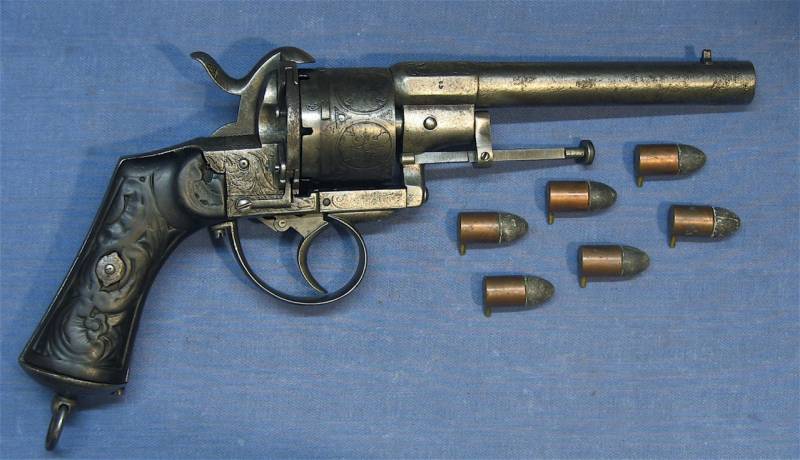
Chenault Joseph's revolver
Lying at the bottom of the holster
Where Abadi's door is the gate
Gateway to other worlds!
Count them, behind the door of Abadi:
One two three four five six.
There is an address on every shell
On the pool - even more so there is!
Adam Lindsay Gordon
ancient weapon from A to Z. So, today we have short-barreled firearms with the letter “C”. Almost all owners of this letter are Belgians. Moreover, initially there were much more of them. But here the selection criterion worked - no manufacturers of hunting rifles, cartridges or primitive single-shot capsule pistols. However, not all revolvers were included here. For some reason, there were a lot of copies of the same Lefoshe, Francotte and Varnan revolvers. However, it is clear why this is so. They are “our own”. And from whom, if not from “our own”, and to tear it apart? There is no need to travel by boat to America to sign an agreement, or even cross the Canal. And you can release it by purchasing a license, “one to one”, without any “zest”. It's just that I don't like these. They are simply taking up space. But here are all those models that, although they are copies, the authors added something of their own to them, that is, interesting samples. However, there were plenty of them too. In general, I have the strange impression that in Belgium in the XNUMXth century, weapons were made in almost every house. I installed a couple of machines, a bath for nickel plating, ordered a bunch of ready-made or semi-finished parts, bought ivory and mother-of-pearl, and go ahead and produce revolvers “a la...”. A workshop like this doesn’t need many workers. And the income is guaranteed, and there will be enough for a piece of bread and butter for all family members. Again, pride - “industrialist”!
Our first will be Chenault Joseph (“W” is their “S”), originally from Vendre. A typical Lefoshe revolver with exactly the same cartridges. Joseph wanted to put “his” extractor on it. But he just miscalculated, and he clung to the holster, which made it impossible to remove the weapon. I had to redo it! Very few of these revolvers have survived, but still they have reached us.
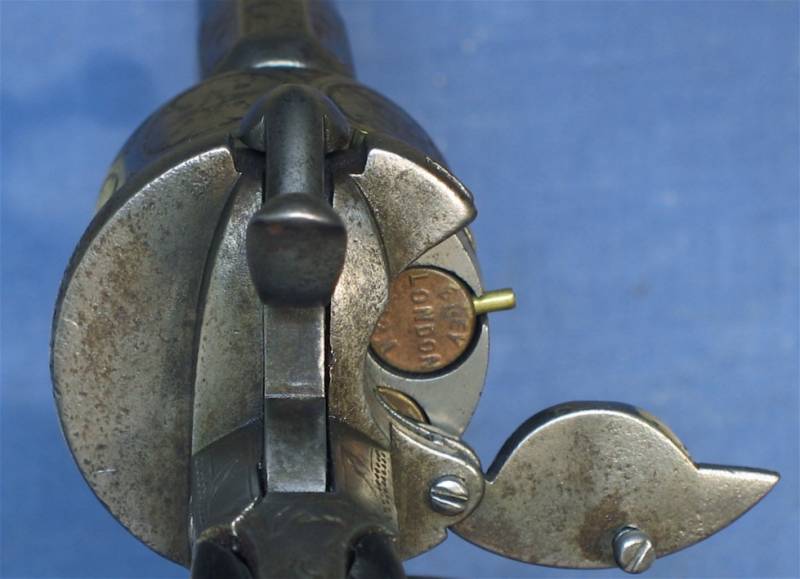
The Abadi door is open, and in the chamber you can clearly see a hairpin cartridge inserted into it with a hairpin sticking out.
But then Chenault thought and came up with “this”: a twenty-round double-barreled (!) pin-type revolver of 9 mm caliber. Moreover, his trigger was designed in such a way that it allowed him to fire 12 shots at once, and then, by moving the trigger, eight more! However, this was not enough for him, and he also equipped this revolver with a folding bayonet! The total length with the blade folded is 270 mm, with the blade open – 405 mm. Barrel length – 145 mm. To open the blade, you must forcefully press the button located to the right of the blade. And to fold, press the button on the left, which presses on a very powerful spring located on the other side, which is clearly visible in the photographs.
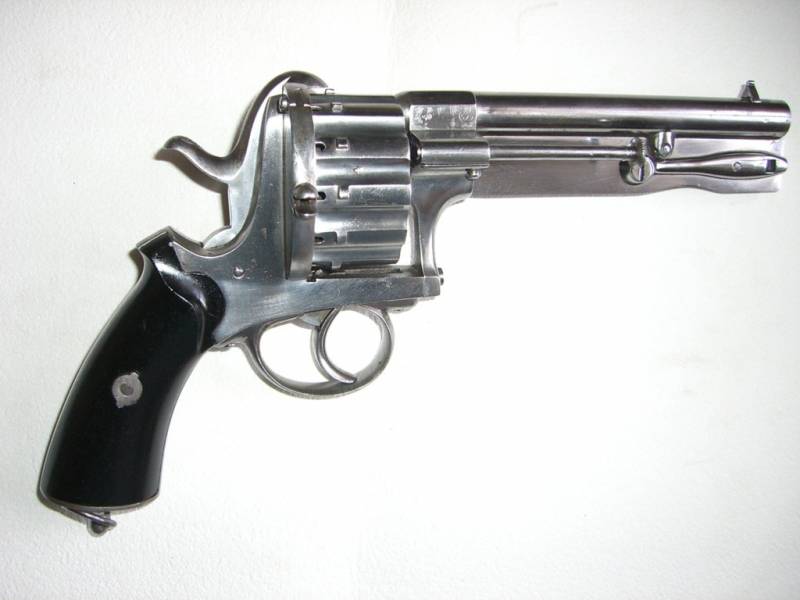
Revolver Chenault. Right view
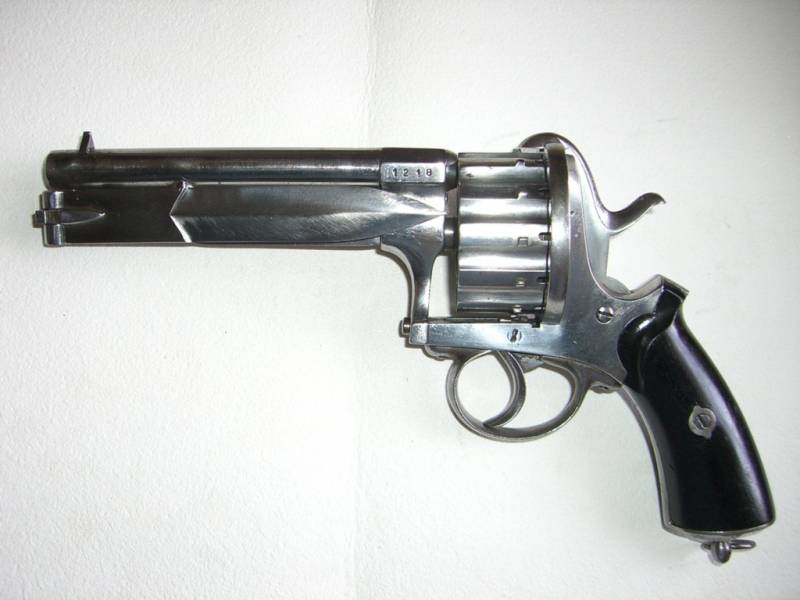
This is the view from the left. The folded blade is clearly visible!
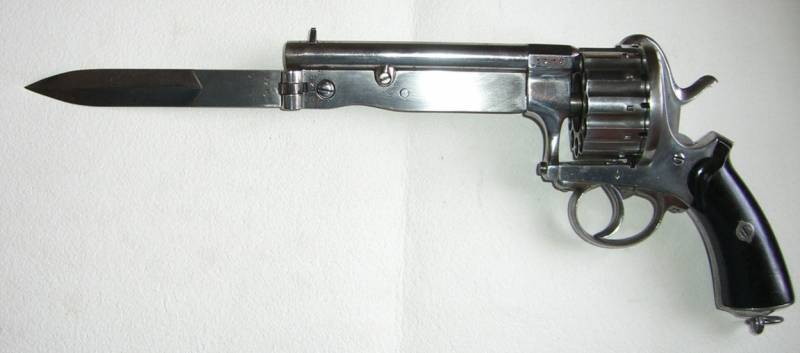
Revolver with a folded blade. Left view
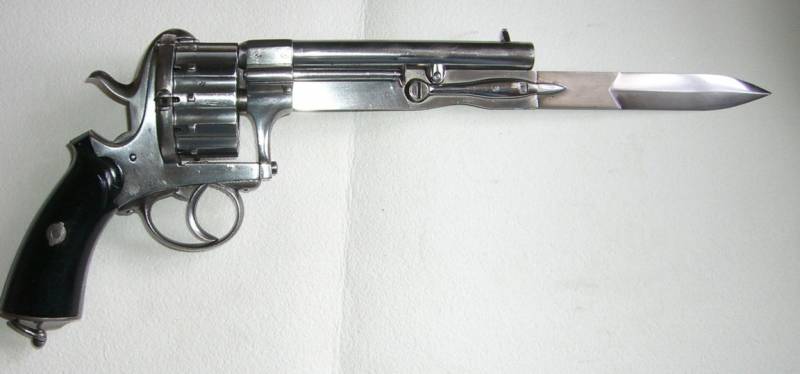
This is the view from the right
After that, he got a taste for it and even produced a 30-round revolver, but this turned out to be the limit of the technical capabilities of the revolver! He usually produced 10-12-shot models, which was also not bad, considering that the famous Colts had only 5-6 charges.
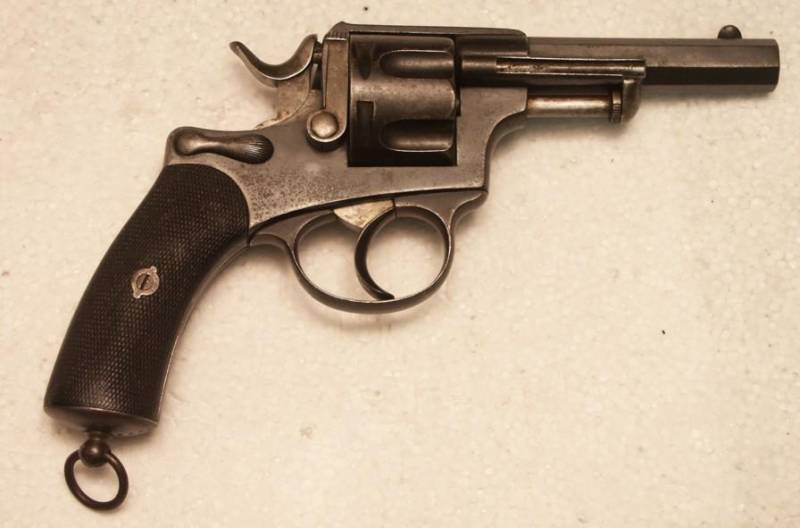
Next we have Shamelot-Delvigne with an 1873 model revolver, well, just very similar to a revolver. Produced in 1877-1893.
I thought many times about whether any of the gunsmiths would think of putting a “puffer” (a lever for driving a bullet tightly) onto their revolver, combining it with the trigger guard. And now - oh, joy, such an inventor was found, and for some reason not in the USA, but in distant Europe!
It turned out that this was a revolver of the Charlier system, a gunsmith from Vendres, based on patent No. 5285 of February 12, 1857. Well, how this mechanism works is quite clear from the photograph. This, it turns out, was the Charlier revolver. But it was not widely used.
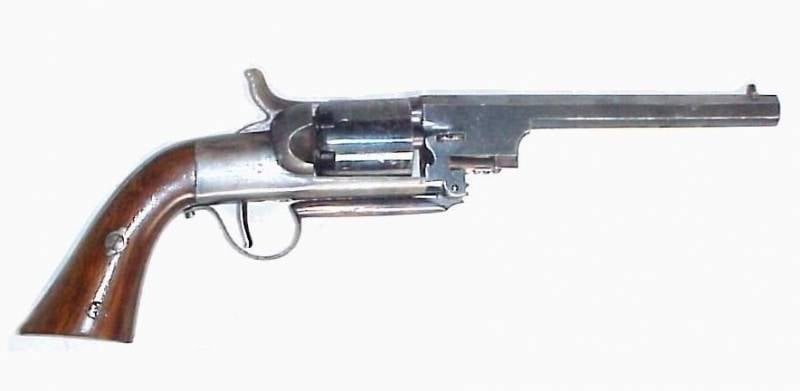
Revolver "Charlier". Appearance
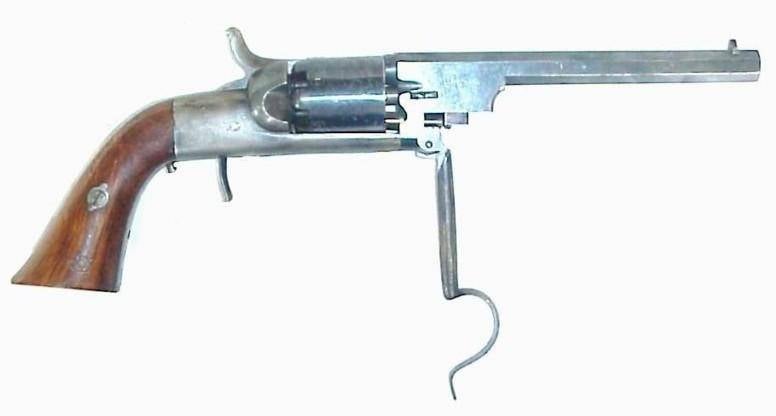
It’s the one with the bracket-lever unfolded
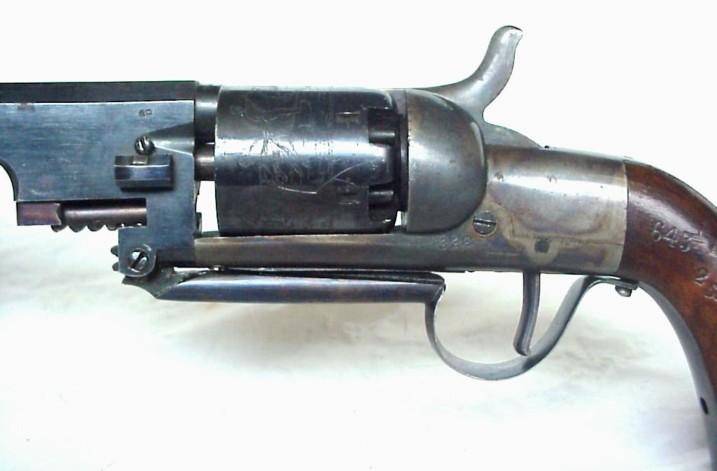
And it is shown close-up in the view on the left
It has long been noted that human imagination has no boundaries. This statement also applies to the imagination of weapon designers. This, for example, combination knife and revolver was produced in Liege in the last quarter of the XNUMXth century, and for some reason the originality of this “object” appealed to everyone who cared about personal protection. However, its effectiveness is questionable. The revolver is a Lefoshe type weapon with an open frame and a folding knife blade attached to it. And again, it was made by a master named Charlier...
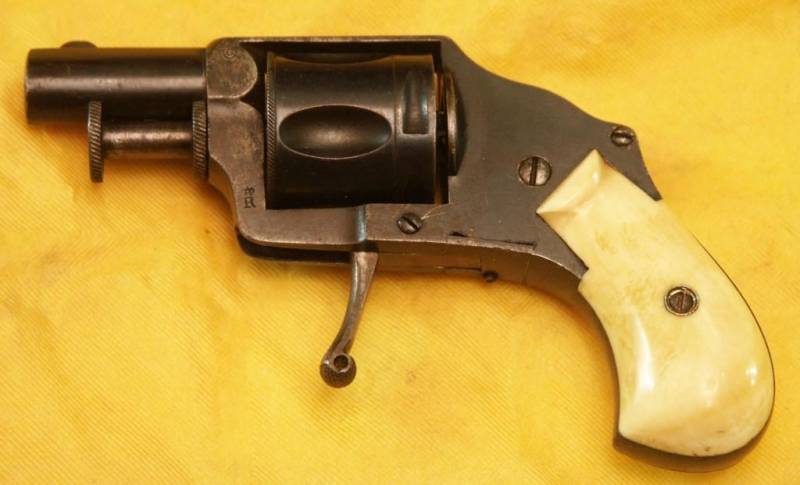
Revolver by Henri Christophe
Henri Christophe is also on “C”, and this is the kind of pocket revolver he owns with a central striking part and a closed frame. The ball trigger at the bottom is drilled for some reason and does not have a trigger guard. The rifled barrel is round, with a crescent-shaped front sight. Five-shot drum with deep recesses. Bone handle lining. The revolver itself is hammerless. This is a simple but elegant weapon to carry in a handbag or vest pocket. By the way, a typical “bulldog”.
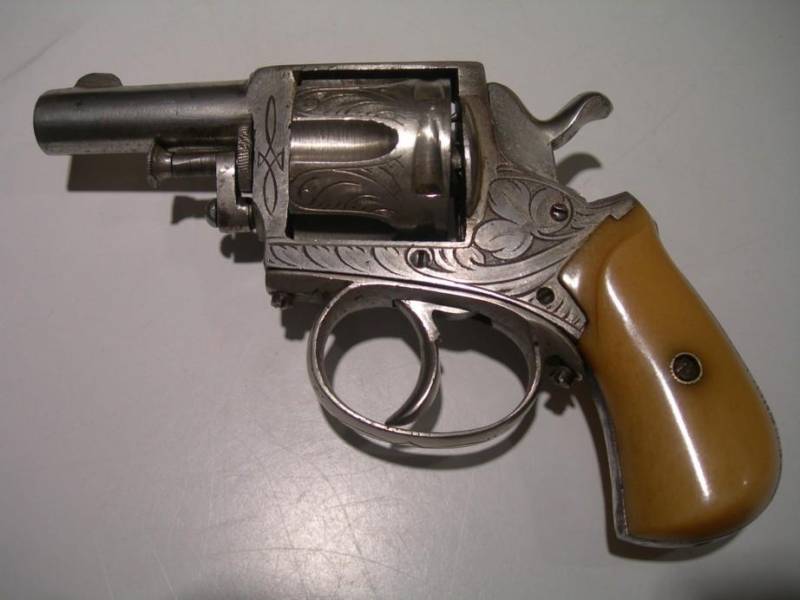
Closset's revolver J.M.
It is interesting that many people produced similar revolvers. This revolver, for example, was produced by J. M. Closset. A typical, one might say, “Bulldog” revolver with a central striking part and a closed frame. The frame and barrel could be cast! The short barrel is rifled and equipped with a crescent-shaped front sight. The trigger under the trigger guard is very curved. The six-chamber drum is recessed to reduce weight. Like the entire frame, it is decorated with floral engraving. The handle is trimmed with bone.
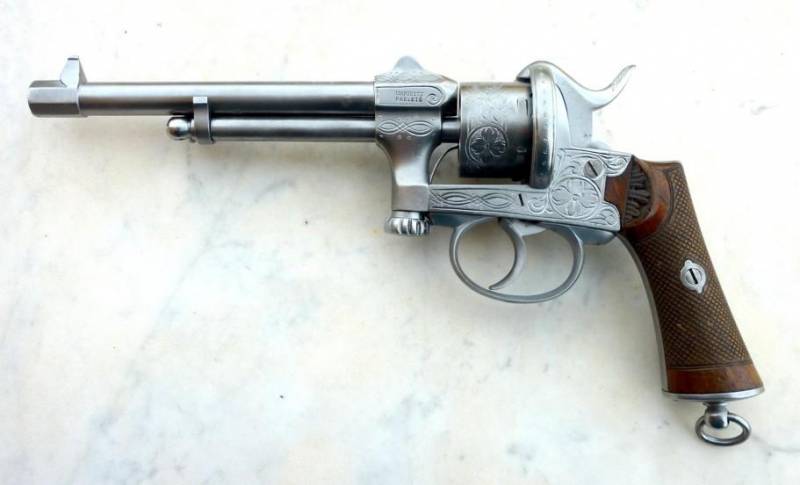
Louis Colard revolver of the Marietta system
It would seem, what is so special about it? Is it perhaps a faceted “mushnik” attached for an unknown purpose? But no, this revolver also has its own “zest”. Look at the photo below: just unscrew the screw at the bottom of the frame, this revolver can be unfolded as follows and in this form it can be unloaded and loaded!
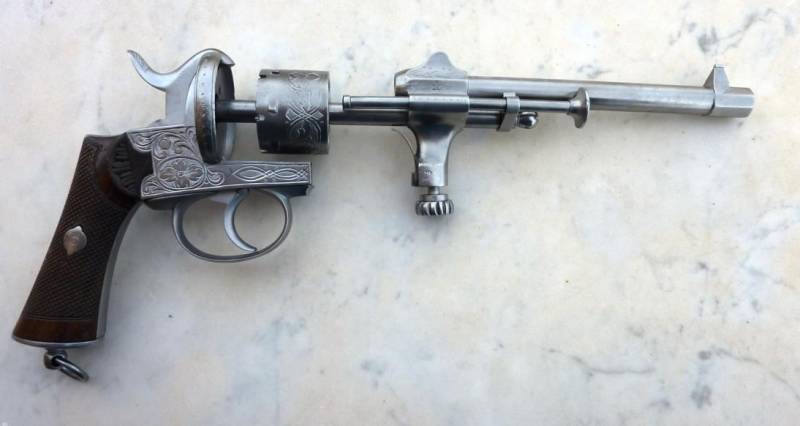
Colard's revolver unfolded
We already wrote about Victor Colette’s “gravity pistol” from the mid-XNUMXth century on the pages of VO, and there is no particular point in repeating it. However, it is necessary to remind you what the point is here. The Colette pistol is nothing more than a European version of the Smith and Wesson Vulcanic pistol. Both of them fired not with cartridges, but with bullets with a recess inside, and it was in this recess that the powder charge and the initiating paper capsule were placed, which burned out when fired. Only in the Vulcanic pistol were these bullets fed into the barrel from an under-barrel tubular magazine using a lever-brace, while in Collet they were fed into the barrel from a magazine on the barrel (!) under the influence of gravity. He fired, raised the pistol with the barrel up, pulled the trigger back - and the pistol was loaded! An original design, to be sure. But the battle with such “cartridges” was rather weak.
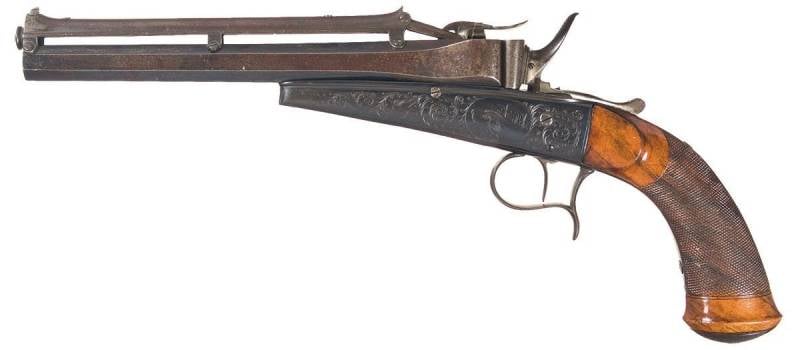
Victor Collet's pistol
The revolver of the gunsmith Philippe Coquette seems to be an exact copy of the Smith and Wesson revolver. However, it also has something special in its design. And this is special - a lever located on the right behind the trigger, by pressing which the upper fastening of the frame was released. Both Francotte, Varnan, and Vebley had this knot arranged differently. It is difficult to say whether this technical solution was more convenient than those mentioned above, but still the person managed to come up with it, although it was clearly not easy.
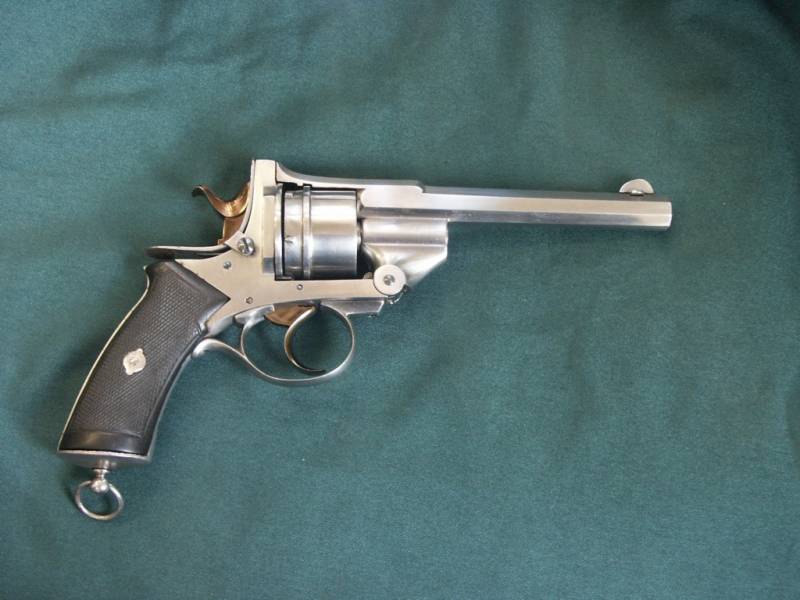
Revolver Coquette
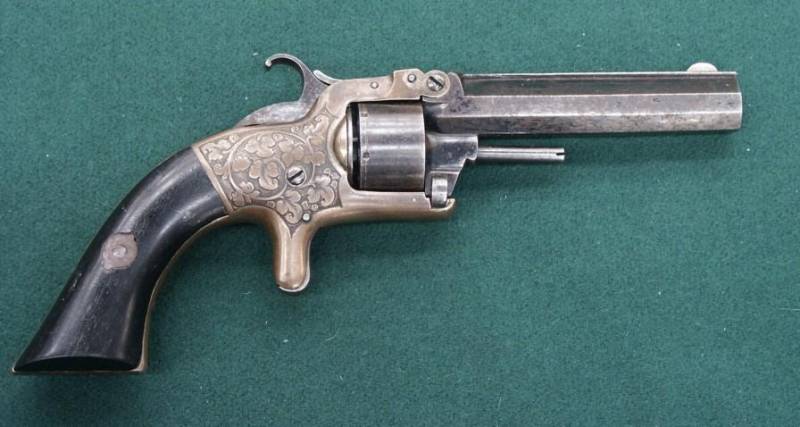
Well, the Coquilhat revolver is nothing more than an exact copy of the first model of the Smith and Wesson cartridge revolver, only it was produced in Europe
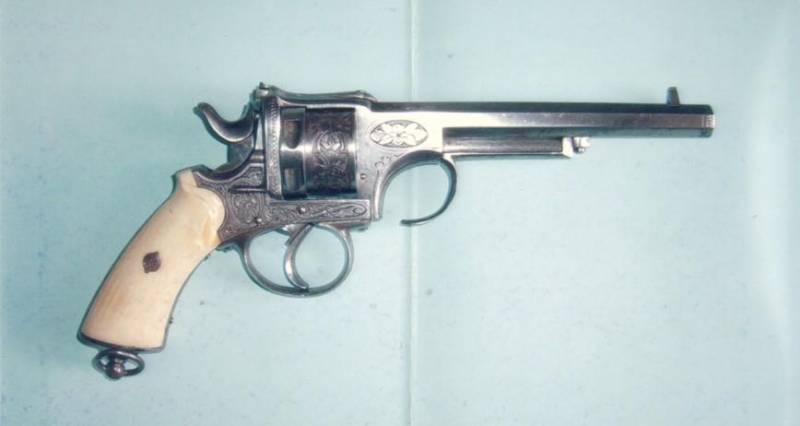
Theodor Kreuth's revolver also had an original technical solution - a lever under the barrel, behind which the barrel and drum were pulled forward for loading...
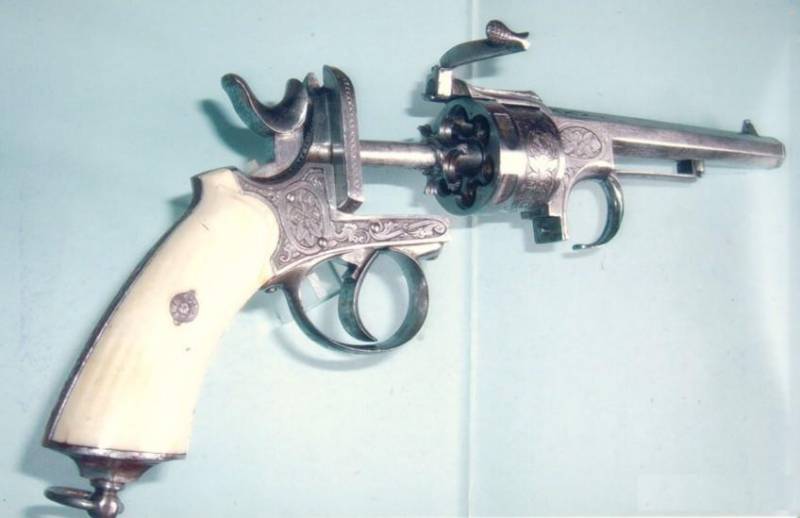
This is what he looked like in this position...
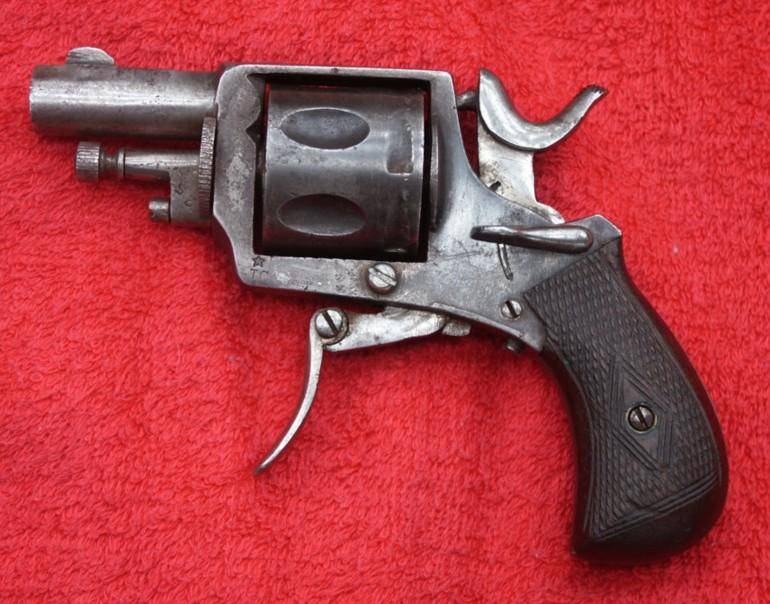
And Theodor Kreuth, by the way, also produced “bulldog” revolvers...
Today we looked at revolvers starting with the letter “C”. Moreover, in reality there are much more of them, there is simply no time or space for more. However, everything is still ahead, so if we missed something interesting, we will definitely make up for it later.
PS
The author and administration of the site would like to thank Alain Dobres (www.littlegun.be) for the opportunity to use his materials.
To be continued ...
Information